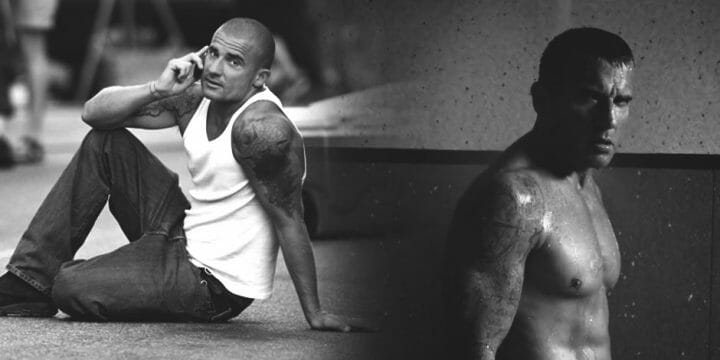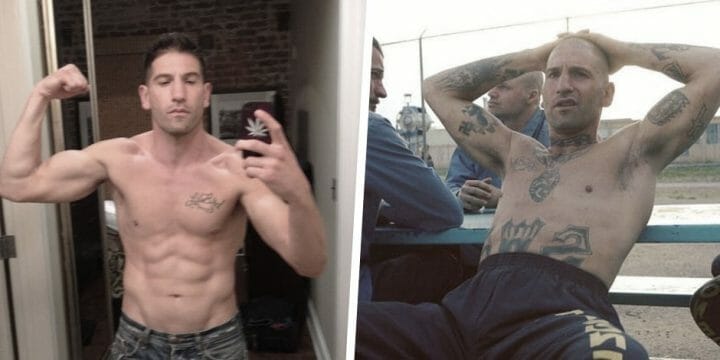No matter what professional bodybuilder you ask about who the most influential strength training coach is, Charles Poliquin’s name will always be on the top of the list.
While I didn’t have the pleasure to meet him, I followed his advice since my college days. Between his books and online resources, he shared training methods that strength coaches around the world still use for clients.
Our team here at Total Shape spent some time coming up with the ideal routine, and we also put together a guide to Charles’ workout principles.
His Stats

- Year of Birth: 1961
- Height: 5’9”
- Weight: 185 lbs
Born in Canada, Charles was one of the most accomplished and respected coaches in the bodybuilding industry.
He had a medical level understanding of how different athletes’ muscle fibers react to both exercise and diet.
He gained the nickname “Strength Sensei,” and worked with over 800 Olympic athletes (many of them gold medalists) in countless disciplines throughout his career.
Sadly, he died in 2018 of a suspected heart attack, but that hasn’t stopped other coaches around the world(Milos Sarcev being one of them) from continuing his legacy by coming up with workouts that follow his principles.
Let’s take a closer look.
Charles' Training Principles

Back as a trainee personal fitness coach, I spent countless hours studying Poliquin’s books and online materials.
I spent a lot of time experimenting with my own training program. And the more I adapted it to the following principles, the more lean muscle I gained and body fat I lost.
Here’s what it’s all about.
You May Also Like: Charles Poliquin Workout PDF
1. German Volume Training

German volume training is a training method that originated in Germany in the 70s, and it aims to build muscle mass as fast as possible.
Some coaches just refer to the German workout like the 10 sets workout routine, and there are no prizes for guessing why.
The aim is to focus on one body part, pick one exercise, and do 10 sets of it.
What does this do?
Essentially, your body hypertrophies the target muscles, and it wouldn’t be uncommon for an athlete to gain 5 pounds of lean muscle in less than a month.
2. Borg Principle

This principle says that if you do the same routine, with the same number of sets and hand grips all the time, you’ll limit your ability to gain muscle mass.
Instead, you should switch around the workouts every week to avoid hitting training plateaus and trick your nervous system into engaging your muscles more.
3. Shifting Reps
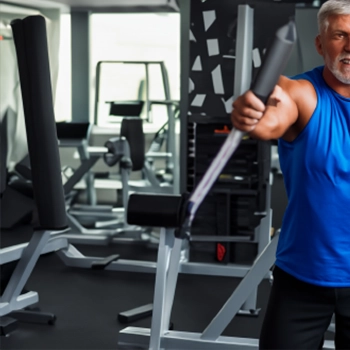
Too many bodybuilders get stuck on the 8 to 12 reps idea, and I’ve worked with clients who always do the exact same number of reps.
Charles believed this approach to rep schemes was a big problem, and he recommended constantly shifting reps to get a better muscle mass reaction.
You can do this either by changing the rep schemes for your weight training from day to day.
But it’s also possible to take it one step further and change it from set to set.
4. Rest

I’m not looking at rest days here, but more at the rest intervals in between sets.
Depending on your overall goals and the strength gains you’re expecting, there is a big difference in how long you rest.
If you’re aiming for maximum muscle gains, then you could be doing sets of just 6 reps.
Whether or not you keep your heart rate up is entirely irrelevant, as your goal is hypertrophy.
Allow your heart rate to come down so that you can maintain high-intensity workouts and plan a heart workout for a cardio session.
5. Time Under Tension

No matter which body part you’re targeting, the type of exercise, sets, and reps all add up to what’s called time under tension.
It refers to the amount of time your muscles are fully engaged, and you want to push this as high as possible.
Don’t do 10 bicep curl reps in 20 seconds, like a wild chimp thrusting in mating season on the Discovery Channel.
Slow things down!
Count to 3 on the concentric phase, and then count to 2 on the eccentric phase as recommended by research by Sports Health [1]. Even consider holding each rep for 2 seconds at maximum engagement.
Charles Poliquin’s Workout Routine
We’ve put together this strength training plan that focuses on a specific body part each training day.
Now, this isn't the type of training plan Charles would have put together for a professional athlete in the final stages of preparing for the Olympics.
But we assume that kind of plan isn’t suitable for most of our readers.
Additionally, considering environmental and seasonal adaptations in training, such as adjusting routines for summer heat or winter cold, can help optimize performance and prevent injury.
Day 1: Chest & Back
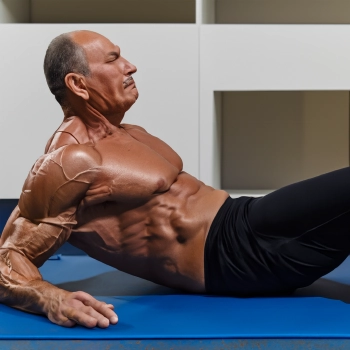
We designed these exercises to give you a high-intensity chest and back workout.
The last two reps should be tough, so make sure you pick the right weight and increase the weight from set to set if needed.
Integrating mindfulness and mental training techniques during these challenging moments can significantly enhance focus and performance, leading to better workout outcomes.
You can allow rest periods of 30 to 60 seconds.
- 10 to 15 minutes warm-up (5 sets of 8, 8, 7, 6, 5 reps)
- Standard bench press (5 sets of 8, 8, 7, 6, 5 reps)
- Incline dumbbell bench press (5 sets of 8, 8, 7, 6, 5 reps)
- Weighted wide-grip pull-ups (5 sets of 8 reps)
- Barbell row (5 sets of 8, 8, 7, 6, 5 reps)
Day 2: Rest
While you won’t be lifting weights, you should still remain active, go for walks, and do some stretching.
You should also consider doing some foam rolling to massage your muscles, which is proven by studies published by Frontiers to be the best way to help with muscle soreness [2].
Day 3: Arms & Shoulders

These exercises are heavily focused on isolating specific muscles in your arms and shoulders, and you should quickly notice that you’re getting stronger and able to increase the weight.
Similar to day 1, you’re going to mix up the reps a bit which will mean picking up some heavier free weights between sets.
- 10 to 15 minutes warm-up
- Weighted close-grip chin-ups (5 sets of 8 reps)
- Overhead cable triceps extensions (5 sets of 8, 8, 7, 6, 5 reps)
- Concentration curls (5 sets of 8, 8, 7, 6, 5 reps)
- Front raises (5 sets of 8, 8, 7, 6, 5 reps)
- Lat pulldown (5 sets of 8, 8, 7, 6, 5 reps)
Day 4: Rest
Take a similar approach to day 3 and focus on going for walks, stretching, and some foam rolling.
Day 5: Legs

Here is a combination of exercises that are highly targeted to your legs.
- 10 to 15 minutes warm-up
- Squats (5 sets of 8, 8, 7, 6, 5 reps)
- Leg curls (5 sets of 8, 8, 7, 6, 5 reps)
- Leg press (5 sets of 8, 8, 7, 6, 5 reps)
- Dumbbell lunges (5 sets of 8, 8, 7, 6, 5 reps)
- Calf raises (5 sets of 8, 8, 7, 6, 5 reps)
Day 6: Cardio

The two exercises I generally recommend are an elliptical trainer and a rowing machine.
They engage the whole body, including your core muscles, and they will help you reach higher cardiovascular activity than you would from just running.
Day 7: Rest
Make this an active rest day, and go for a few short walks or hikes to loosen the stiffness in your muscles.
Charles Poliquin’s Diet

Charles was a great believer in paying a lot of attention to your diet and believed it was a critical part of getting stronger.
He also recognized the importance of gut health in physical performance, emphasizing a diet rich in probiotics and prebiotics to support a healthy gut microbiome, which is crucial for muscle growth and recovery.
We gathered four important factors from what he spoke and wrote about.
1. Macro Profile
Different athletes will have unique requirements, but when it comes to bulking up, here is a baseline he often worked off.
- Low Carbs: 20%
- Medium Fat: 30%
- High Protein: 50%
This is obviously quite different from a “normal” diet, but the focus is to provide lots of energy and nutrients for bulking and avoiding the carbs that can increase body fat.
We recommend that you start using our macro calculator because you will have reliable data on balancing the main dietary macronutrients in your diet, and you will get consistent results as you approach your goal.
2. Meal Sizes

Charles always told his athletes to make life easier by spreading out all the food they needed to eat over smaller meals.
Rather than having 15 oz of chicken for lunch and 12 oz of steak for dinner, he recommended splitting that volume of meat over four smaller meals.
Not only could that help with digestive health by not overwhelming your stomach, but it’s psychologically easier to face smaller plates of food.
3. Food Quality
He firmly believed that if the food you eat wasn’t provided the way nature made it, then it didn’t belong to your plate.
It didn’t necessarily mean that he only ate organic food, but rather that the focus should be on limited processing.
That means fueling muscle growth with whole foods and preparing it fresh to get the highest nutrient quality.
4. Avoiding Junk And Toxins
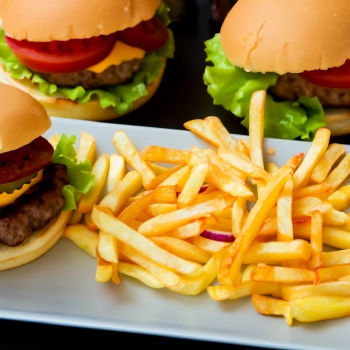
Charles often spoke about the link between junk food, toxins, and injuries.
He was convinced that toxins like heavy metals that accumulate over time significantly impact muscle performance.
Any athletes he worked with who had muscle injuries regularly had to go through chelation therapy to help remove those toxins.
“Know that you have complete control over what you put in your mouth. No one ever ate anything by accident.”
- Charles Poliquin
As a health and performance coach, I always advise my clients to prioritize whole and organic foods and avoid all junk and highly processed food.
What Supplements Does He Take?

Charles Poliquin took some supplements rich in amino acids and other minerals. After all, any highly intense strength workout routine will rely on health and diet supplements, as it’s challenging to keep feeding your body all the macro and micronutrients you need.
1. BCAAs
BCAAs are a small set of amino acids that play a key role in muscle protein synthesis. The more intense your strength training becomes, the more you may be able to benefit from faster recovery times and muscle building.
2. Magnesium and Zinc
One of the tips Charles spoke about a lot is the mineral requirement of a body that is under constant athletic strain.
Magnesium has been scientifically proven to help with muscle function and relaxation, which may help you get better sleep. And zinc plays a crucial role in hormone production, which includes testosterone.
Related: Best ZMA Supplements
3. Omega-3s
Unless fish is on your daily menu, you should be able to benefit a lot from taking omega-3 supplements.
It may provide anti-inflammatory benefits to all muscle groups you’re training, and some research also points to it helping with post-workout recovery.
4. Whey Protein
While he did often say that your diet should take care of your nutrient needs as much as possible, it’s difficult to get a protein boost after workouts.
That’s where strategically planned whey protein shakes might help to kick-start that muscle protein synthesis.
It's one of the supplements I like to recommend to my bodybuilding clients.
Related: 7 Best Whey Protein Powders
FAQs
What Happened to Charles Poliquin?
Charles Poliquin, unfortunately, died on September 26, 2018, from a suspected heart attack. Some people close to him say that he was exposed to a higher genetic risk of heart failure as his father had suffered a similar fate.
Who Did Charles Poliquin Train?
Charles Poliquin trained over 800 Olympic and other professional athletes, including Michelle Freeman, Nanceen Perry, Adam Nelson, and Gary Roberts. People used to join long waiting lists to become one of his trainees.
References:
- https://www.ncbi.nlm.nih.gov/pmc/articles/PMC3899915/
- https://www.frontiersin.org/journals/physiology/articles/10.3389/fphys.2019.00376/full
About The Author
You May Also Like
